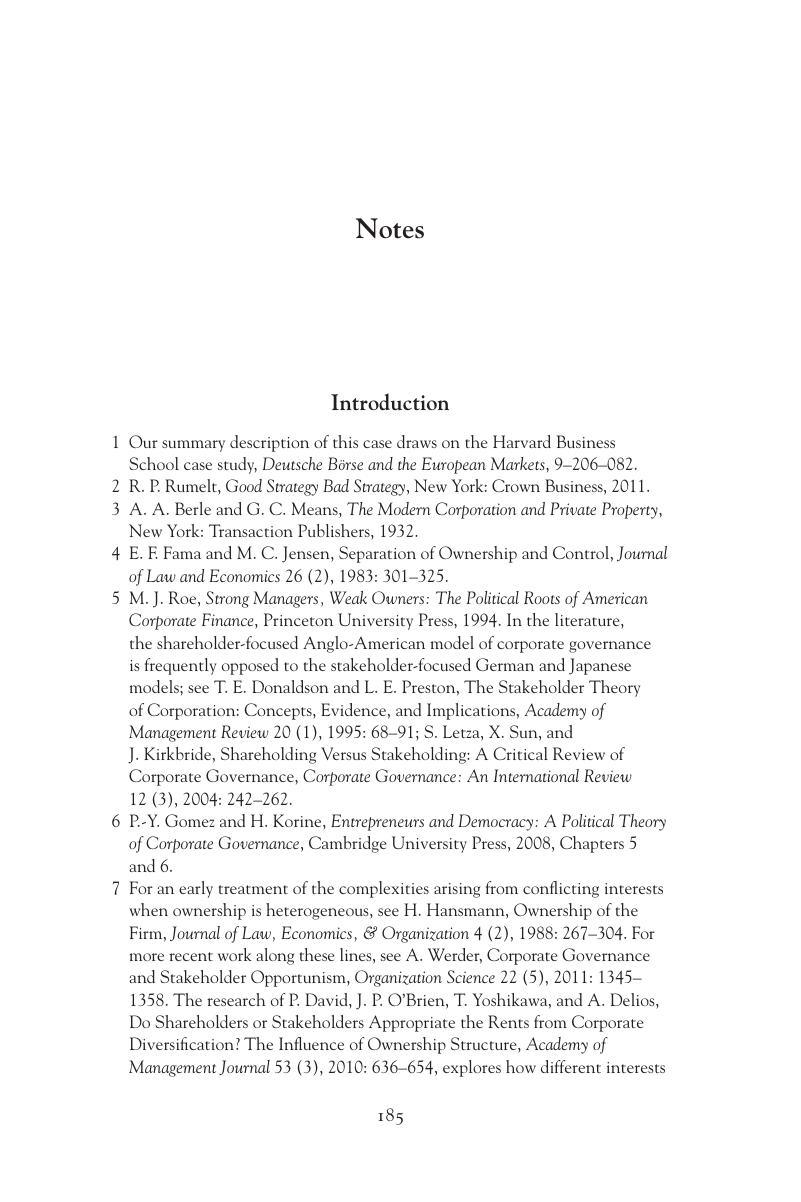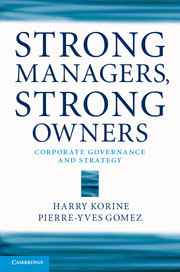Book contents
- Frontmatter
- Contents
- List of Figures
- List of Tables
- Foreword
- Acknowledgments
- Introduction
- Part I Changes in the identity of ownership and management
- Part II Changes in the form of ownership and organization
- Part III Changes in strategy
- Part IV Implications for corporate governance
- Notes
- Index
- References
Notes
Published online by Cambridge University Press: 05 December 2013
- Frontmatter
- Contents
- List of Figures
- List of Tables
- Foreword
- Acknowledgments
- Introduction
- Part I Changes in the identity of ownership and management
- Part II Changes in the form of ownership and organization
- Part III Changes in strategy
- Part IV Implications for corporate governance
- Notes
- Index
- References
Summary

- Type
- Chapter
- Information
- Strong Managers, Strong OwnersCorporate Governance and Strategy, pp. 185 - 205Publisher: Cambridge University PressPrint publication year: 2013



